Here’s a handy guide to Clematis types and varieties. There are more than 300 species of Clematis and hundreds of hybrids—so we’ve compiled an easy overview to start your search.
There are three basic categories of growth, or “groups,” of Clematis plants:
-
Group one, which bloom only on old wood. These plants need very light pruning only if they’re overgrown. If pruning, do so before the end of July. Examples include Clematis montana, C. alpina, and evergreen species C. armandii.
-
Group two, which bloom on old and new growth. Clematis varieties in this group generally only need a light pruning each year after blooming. Most of these are the large-flowering hybrids, including ‘Diamond Ball’ and ‘Viva Polonia.’
-
Group three, which bloom primarily on new growth and can be cut back to about 12 inches in early spring. Species include C. viticella and C. x jackmanii. ‘Happy Jack’ is group three cultivar.
Clematis Flower Types
In addition, there are 10 basic Clematis flower shapes, and the timing of when they flower in the year:
Bell-shaped
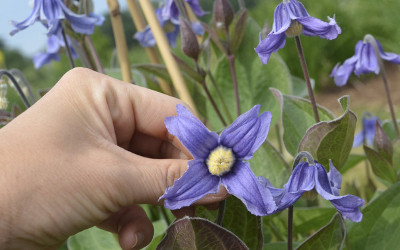
Open bell-shaped
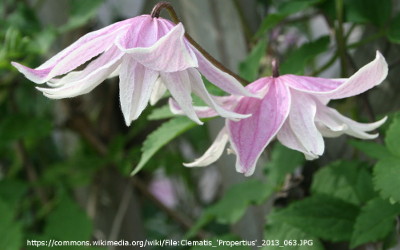
Double large flowers
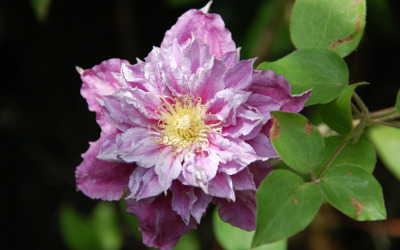
Single large flowers
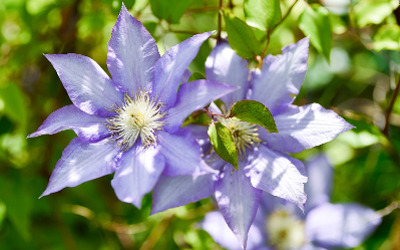
Saucer-shaped

Star-shaped
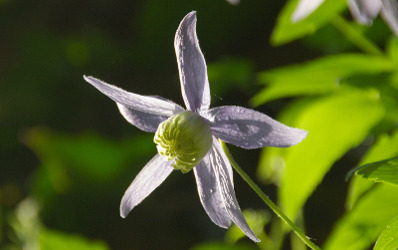
Tulip-shaped
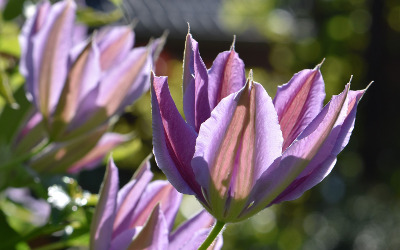
Tubular
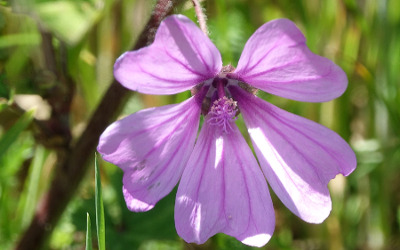
C. montana
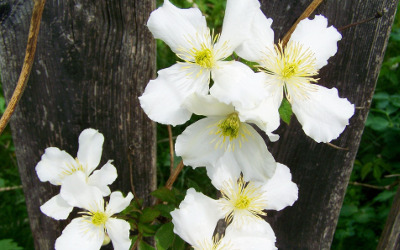
C. viticella.

White Flowered Clematis Varieties
Purple & Blue Flowered Clematis Varieties
Sweet Summer Love Clematis Vine
Happy Jack Purple Clematis Vine
Pink Flowered Clematis Varieties
Clematis Bush Varieties
Clematis plants generally are easy-care and pleasant additions to just about any garden—once established and in the appropriate locations. It’s important to do a little planning before the planting. Consider these five key elements before you select your Clematis plant.
1. Your garden hardiness zone: This is probably the best place to start, particularly for gardeners in northern latitudes. Most species and cultivars are hardy to USDA hardiness zone 4, but some are not. For example, the evergreen species, C. armandii, is hardy in zones 7 to 9. The hybrid ‘Stand by Me’ Clematis, on the other hand, is hardy to zone 3. There are more than 300 species of Clematis and hundreds of hybrids—so make sure your choice will perform well in your garden climate.
2. Preferred bloom time: This will make a big difference in the type you choose. There are Clematis varieties that bloom starting in late winter, while others bloom in spring, summer, or fall. Some are even repeat-bloomers, producing flowers in more than one season. Herbaceous Clematis plants, like ‘Stand by Me,’ if deadheaded, can bloom from late spring through early fall.
3. Plant location: Various species and cultivars of Clematis have preferences for spacing, soil type, and sunlight. For example, ‘Viva Polonia’ is a vining cultivar that spreads 4 to 6 feet and should be spaced 3 to 5 feet from other plants. ‘Pink Mink,’ also a climber, requires more than 6 feet of spacing. Generally, most Clematises tolerate a range of Ph and are adaptable to different soil types. But some prefer slightly acidic or sandier soil. Regarding sun requirements, winter- and spring-blooming Clematis can be a little more versatile, since they’ll likely get plenty of sunlight—even in a deciduous woodland—to form buds before the surrounding trees leaf out.
4. Plant supports: Determine this before you choose your plant. Some Clematis varieties require strong and tall supports, like a trellis, an arbor, or wire supports on a wall. Those that grow tall and wide, like ‘Happy Jack,’ can get quite heavy with growth. Providing a solid structure for their vines and foliage can help prevent wind damage and breakage.
5. Potted vs. in the ground: Plants that do well in pots are the varieties that are non-climbing, or those that don’t grow quite as tall. ‘Stand by Me’ is a shrub-forming plant that works well in pots. It might need a little support from a stake, but only reaches a height of 34 to 38 inches. ‘Viva Polonia’ is a climbing Clematis, but reaches a height of just 4 to 6 feet. It can be grown in the ground or in a pot, but will need support.
 |
Author Chris Link - Published 10-01-2019 |
